
We kindly inform you that, as long as the subject affiliation of our 300.000+ articles is in progress, you might get unsufficient or no results on your third level or second level search. In this case, please broaden your search criteria.


The two decades of the political coexistence of Carpathian Ruthenia with the Czech Lands can certainly be described in many ways, most of which would imply the considerable changes the area underwent during this period. A comparison of its beginning and end offers a historical shortcut: While in 1918–1919 the land at the foot of the Carpathians was deeply affected by great historical shifts and its representatives were as fully aware of this as they could be, twenty years later the Carpathian leaders under the same conditions were intoxicated by the illusion that they themselves and their people were contributing to the revolutionary transformation of the European order. They were soon to be tragically disenchanted.
More...
During the Nazi occupation the Czech aristocracy suffered from a wave of repressions. Not only did they affect the property of many aristocratic families whose pro-Czech attitude was an unforgivable crime in the eyes of the Nazis, but some lives were lost, too. Among those arrested and sentenced to death during the second martial law was Humprecht Czernin, a member of the old Czech nobility. His fate was therefore the same as that of Count Antonín Bořek-Dohalský and his brother Zdeněk, who were arrested by the Gestapo during the first martial law in the autumn of 1941. Shortly before that, the repressions also affected Humprecht’s brother Rudolf, whose extensive land was confiscated in February 1942 because of his political attitudes, and he was subsequently arrested. Even though he did not lose his life like his brother, he spent the rest of the war in a Nazi prison.
More...
At 3 o’clock on the afternoon of 16 April 1947, the main trial was held at the National Court as the court of honour in the case of František Machník. The former grammar school professor and director, an MP for the Agrarian Party and in 1935–1938 Minister of National Defence was accused of conduct not befitting a loyal and courageous Czechoslovak citizen in Klatovy and elsewhere at a time when the republic was facing greater threat, i.e. after 21 May 1938. He was to be found guilty as per Sect. 4 of Presidential Decree 17/1945 Coll. and to be deprived of his rights as per Sect. 5 of the same Decree.
More...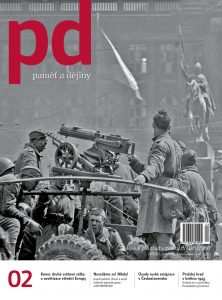
Václav Veber explores the conditions under which communists or other pro- -Soviet parties took power in individual Central European countries. They achieved this in the years following the end of WWII thanks to Stalin’s cohesive tactics, the wide deployment of Soviet advisors, the uncompromising destruction of democratic parties and infiltration of left-wing ones, control of security forces, the defamation of opponents, intimidation and direct violence.
More...
Martin Jindra outlines the story of the Czechoslovak Hussite cleric from his studies, ordination and peacetime parish work to his dramatic escape from his homeland during the Nazi occupation, war-time activities, return from England and subsequent second forced emigration following the 1948 Communist putsch.
More...
At the very end of the war the civilian population of the still occupied Prague rose up. From 5 to 9 May the Prague Uprising raged in the city. An introductory study by Pavel Zeman outlines the course of those events at the very heart of Czech statehood, Prague Castle, as does a period testimony from a one-time clerk at the office of the president, JUDr. František Škarvan, who took part in and observed the insurgency at the Castle.
More...
Márkus Beáta: „Csak egy csepp német vér”. A német származású civilek Szovjetunióba deportálása Magyarországról 1944/1945. Kronosz Kiadó, Pécs, 2020. 369 oldal
More...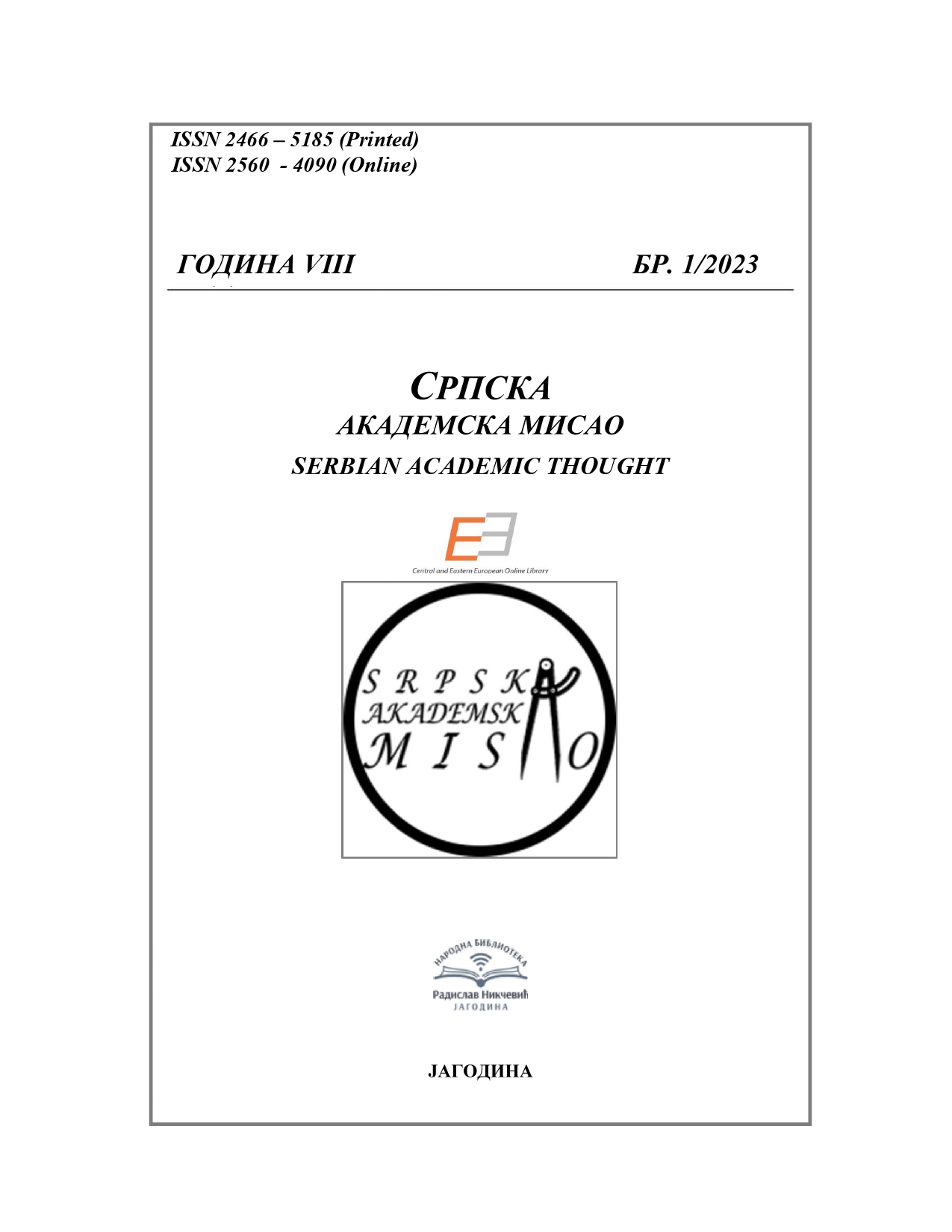
At the beginning of November 1944, a group of Allied prisoners was freed in an attack by Chetniks on a German column retreating from Greece. We have several sources about this event, starting from the statements of the prisoners themselves who mention the night skirmish, up to the claims that it was one of the biggest ambushes on the German forces in which they suffered huge losses. In order to understand the situation, we need to compare all the sources about this event, but also to explain the relations between the Chetniks, the Germans and the Allies at the end of 1944.
More...
Bronisław Muzyka, born in the region of Lwów, settled down in Szadek after the Second World War. He lived more than fourty years as a citizen of this town, where he was active, among other things, as the bandmaster of the Volunteer Fire Brigade. His life had a tragic episode – it was his stay in Flossenburg concentration camp and its subcamp in Legenfeld. Fragments of written down by Bronisław Muzyka memories of this time describe the situation of the Nazi forced labour camps prisoners, among whom were the inhabitants of Szadek region.
More...
This article analyses the German National List (Deutsche Volksliste) compiled in the Łódź region during the Second World War. The Volksliste was part of the Nazis’ plans to re-Germanise the Łódź Germans and to separate them from the influence of Polish culture and society. The main questions addressed are the categorisation of Volksdeutsche by the Volksliste offices, and the motivations of Germans who rejected the list or applied for admission to a higher category. It is hypothesised that the criteria used for categorisation were insufficient, and that the most frequently applied criteria – language and religion – did not enable an adequate categorisation of the Łódź Germans. People accepted the list for many different reasons (in some cases they were compelled to do so), the most important reasons being economic ones – a desire to preserve one’s wealth, profession or social position. The article is based on various archival sources, including documents of the German administration from archives in Łódź,Poznań, and Warsaw, as well as documents submitted by applicants, as in the case of Oskar Ambroży Klikar, who appealed against his assignment to a low Volksliste category.
More...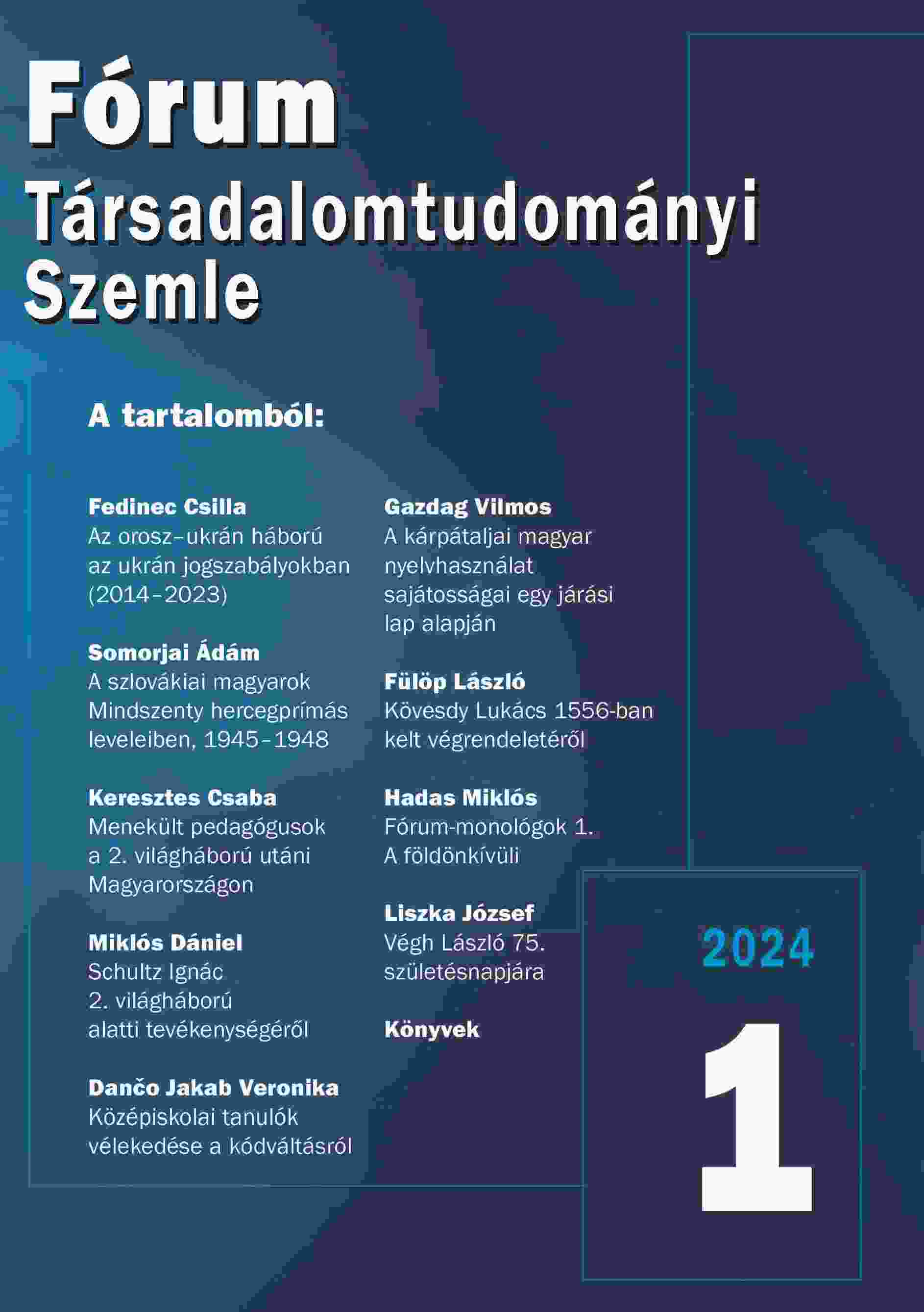
After the Second World War, a significant number of refugees arrived in Hungary, most of them expelled from their homelands or places of service by the neighbouring states. Among them, the case of the pedagogues was peculiar: they had to leave almost everything behind and find a new place to live and start all over again, but they were also lucky compared to their colleagues in the civil service, as they were temporarily assigned to the posts of their colleagues who had left, died, or were taken prisoner of war, and then were permanently assigned to the posts during the period of the organization of the eight-grade school. The situation of refugee pedagogues from Czechoslovakia was even more peculiar.
More...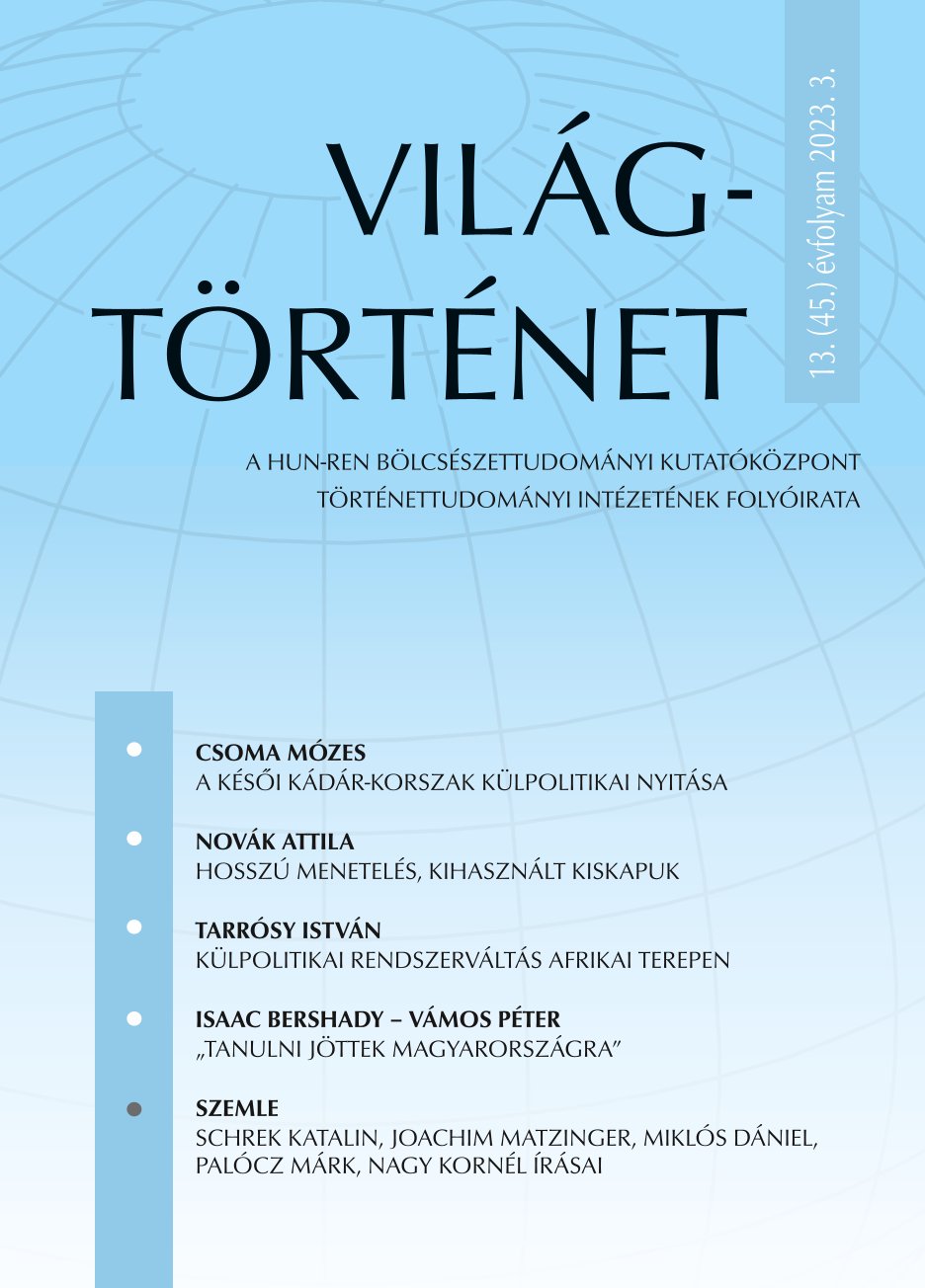
Bene Krisztián: Francia Antibolsevik Légió a keleti hadszíntéren. Pécs, MOSZT, 2021. 366 p.
More...
Prvodecembarskim aktom ujedinjenja Bosna i Hercegovina je ušla u sastav Kraljevine SHS, ali je privremeno zadržala neke oblike državnosti. Glavni odbor Narodnog vijeća za Bosnu i Hercegovinu je prestao sa radom 31. 12. 1918. godine, a Narodna vlada Bosne i Hercegovine 31. 01. 1919. godine i umjesto nje je formirana Zemaljska vlada za Bosnu i Hercegovinu koja je umjesto dotadašnjih 10 povjerenstava imala samo 4 i bila je podređena centralnoj vladi u Beogradu. Profesor Ibrahimagić s pravom tvrdi da čin ulaska Bosne i Hercegovine u Kraljevinu SHS nije bio dobrovoljan kao što žele prikazati velikosrpski historičari, nego da je to u biti čin nelegitimnog prisajedinjenja. Narodno vijeće za Bosnu i Hercegovinu nije imalo legitimitet da odlučuje u ime bosanskohercegovačkog stanovništva o ujedinjenju sa Kraljevinom Srbijom i Crnom Gorom.
More...
Akronim ZAVNOBiH, kojem odgovara složenica Zemaljsko antifašističko vijeće narodnog oslobođenja Bosne i Hercegovine, trpi sudbinu opredmećenog pojma koji, slično gotovo svim drugim, gubi osnovno značenje. Svima se čini da je jasan i da ga je moguće umetati u rečenice. Plastičan je i posljedično prima brojna i teško odrediva značenja. Ali to je narav modernih modularnih govorenja u kojima se čini da riječi mogu biti izdvajane iz rečenica te umetane u njih manje ili više neovisno o samoj rečenici. A značenje svake riječi je drukčije u svakoj novoj rečenici.1 Zapravo, riječ je rečenica. Njenim razbijanjem u sastavne joj čestice umire i smisao koji joj je i razlog i svrha. Zato bi valjalo razmotriti izvorna značenja navedenog imena u političkoj filozofiji. I takav prijedlog je sporan.
More...
The study concerns the pan-European propaganda campaign of the government of Nazi Germany based on exposing the repressive policy of the Soviet totalitarian regime in Kiev. Based on publications in European and Ukrainian journals, I try to determine what role the NKVD special area in the Bykivnia forest played in anti-Soviet propaganda during the German-Soviet war. I describe many mass media and other historical sources, first of all a propaganda leaflet from 1943, which not only includes the largest burial site of victims of Stalinist terror in the system of political repression, but also allows me to determine the main directions of propaganda concerning the disclosure of Soviet crimes, including especially on the example of the NKVD special area in the Bykivnia forest. Using available archival materials, I analyze the criminal case of a participant in the search and exhumation work – a resident of the village of Bykivnia, who was tried in connection with the discovery of the burial site of victims of Stalinist political repression – and I also consider the role that was assigned to the residents of the village of Bykivnia in anti-Soviet Nazi propaganda.
More...
The article concerns the activity of the Special Court in Stanisławów(Sondergericht Stanislau) in the years 1941–1944, i.e. one of the German special courtsfunctioning in the General Government areain the Galicia district. Taking up this topic is justified by the lack ofeven fragmentary findings. Therefore, the aim of the researchwas to determine: what types of cases were considered by theSondergericht; what nationality of the accused prevailed; to what penaltiesthey were sentenced; whether and in which cases the death penalty was imposed; whodirected the work of the Sondergericht, which judges were its members and whichprosecutors took part in the hearings before the Sondergericht; wherethe lawyers involved in its work came from and whether the court's decisions wereoverturned by taking extraordinary legal measures. The source basis for the considerations are archives, literature and the pressfrom that period. On this basis, original, previously unknown findings were made regarding the Special Court in Stanisławów.In addition, the case of Erwin Wester, the chairman of the special court,who was extradited to Poland after the war for trial,which did not happen due to his death, was described.The article was developed as part of a research project financedby the National Science Centre (2020/39/B/HS5/02111).
More...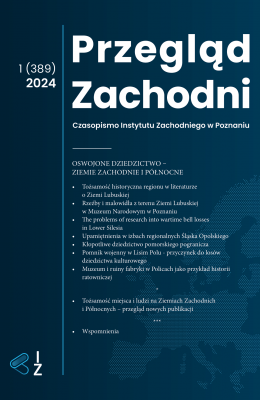
Lower Silesia, a historical province of great artistic standing, was an area of massive requisitions of historical bells during both World Wars. Following World War II, the region experienced additional losses as a result of repeated unregulated transports to Poland’s interior, and in the early period also to the Soviet Union.The aim of the article is an attempt to respond to the current state of knowledge regarding the loss of bells in Lower Silesia, particularly highlighting certain obstacles associated with potential research.The author contends that despite the passage of 80 years since the end of World War II, Lower Silesia has not received a comprehensive investigation on losses and current state of possession. The article attempts to formulate a postulate to carry out extensive research on bell losses and the current state of possession in the area under discussion. The importance of this region, as well as the extent of losses, especially in the 20th century, appear to be among the primary justifications in support of addressing the situation at hand in a comprehensive way.According to the catalog published in 2011, which lists bells that survived requisitions during World War II and as a result of post-war decisions, they were mostly disposed of in the territory of the later Federal Republic of Germany. The catalog became the basis for further detailed studies on this issue, not only in the context of Polish-German relations after World War II, but also as a stimulus for material research and the search for specific sources and missing objects.
More...
During the Second World War, the Romanian-French diplomatic relations were visibly disrupted due to the war alliances then existing, as well as by the conflict events. However, the long-standing friendship between the two states did not support a definitive break of diplomatic relations. Moreover, amid certain crucial moments at that time, the two states made known their mutual affinity and friendship and they assisted each other diplomatically in defending each other's national interests to the greatest extent. In this study, I would therefore focus on the highlights of the Romanian-French diplomatic collaboration throughout the year of 1943 and describe the main events that characterized the activity of the French legation in Bucharest. To the purpose of analyzing this chapter in the Romanian-French relations, I will foremost refer to documents in the CNSAS archive. These documents, reflecting a large part of the Gaullist Resistance activity inside the French legation in Bucharest, are unique and they aid with the under-standing of the nature of the Romanian-French relations of those years.
More...
Murádin János Kristóf: Felejtésre ítélve. Erdélyi magyar civilek szovjet fogságban (1944–1953). Ludovika Egyetemi Kiadó, Bp., 2023.
More...